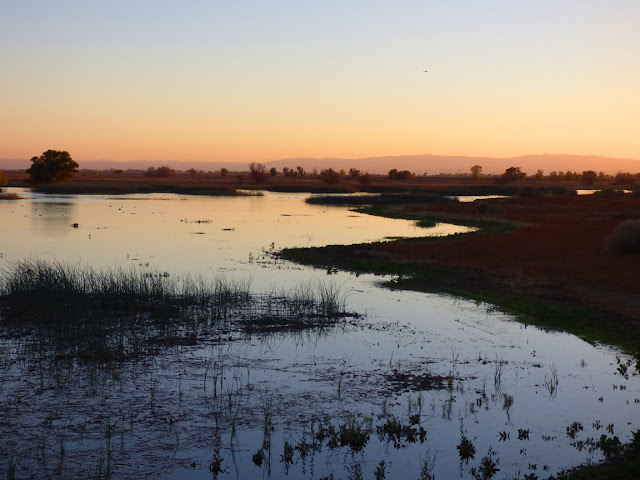Wednesday, November 4, 2015
Fixing What We Broke: A Few Scenes From America's Serengeti Plain
I live in California's Great Valley, also known as the Central Valley. It's one of the most important agricultural regions on Earth, in that it produces around a quarter of the nation's produce. It's an extraordinary geological province, 400 miles of almost perfect flatness. When I moved to the valley nearly thirty years ago, I thought I was moving to a boring place, featureless, and bereft of the kinds of terrain that makes a geologist's heart go pit-a-pat. I was wrong...
I must admit that an exploration of the valley can be a bit monotonous. Traveling Highway 99 or Interstate 5 involves hundreds of miles of featureless fields and orchards, interrupted now and then by towns whose cultural attractions consist of gas stations and fast food restaurants (don't get me wrong, some of our towns have fascinating cultures, but you may have to work to find them at times).
The valley environment ranges from oak woodlands in the north through semiarid prairie in the middle reaches to barren desert to the south. The land is actually well-watered, as the adjacent Sierra Nevada feeds numerous rivers that flow into the valley. The rivers have been mostly diverted for use in irrigation, but about 30% of the water continues on to the sea. About 95% of the land surface in the valley has been converted to agricultural and urban development.
What has enriched my life in recent years is seeing the valley the way our migrant birds see it: a series of "wilderness" islands that allow me to imagine the valley as it once was, America's version of the Serengeti Plains. The prairies and wetlands once supported millions of grazing animals and migrating bird species (along with the year-round resident species). Most of these "islands" are part of the National Wildlife Refuge system, while others are preserves administered by a variety of federal, state and private organizations. These refuges allow the preservation and survival of the remnants of the incredible ecosystem that once existed here. It took a long time to recognize what we were doing to these animals as we took away more and more of their habitat to grow our food, but now there is a movement towards rehabilitating some of the wetland environments. We are trying to undo the damage we've caused over the last century and a half.
I was reminded of these efforts this afternoon when I drove over to a viewing area at the San Joaquin National Wildlife Refuge, one of the main centers of the efforts to rebuild the wetlands (something like 400,000 trees have been planted in riparian habitats that had been converted to farmlands, later abandoned). I saw an astounding sight.
There were perhaps tens of thousands of Aleutian Cackling Geese (Branta hutchinsii leucopareia) gathered in a plowed cornfield (planted by the refuge employees to provide food for the birds). The birds are closely related to the Canada Goose, but are considered a separate species based on DNA analysis. The species had gone into a steep decline due to hunting, the introduction of foxes on the island where they bred, and loss of winter habitat in the Central Valley. They were actually thought to be extinct for twenty four years, as none were seen after 1938, but a group of several hundred were found on some isolated islands in 1962. They were listed officially as an endangered species in 1967.
Aggressive efforts began to protect the birds from extinction, and in fifty years, the results have been successful enough that the bird has been removed from endangered status. From a population of less than 1,000 birds, there are now more than 120,000. And I was looking at a large percentage of the entire population of these birds at the San Joaquin National Wildlife Refuge this afternoon. It was stunning.
The birds certainly still face problems. They are crowded onto relatively limited lands, and drought years can limit the amount of maize and wheat that can be planted on their behalf. The drought also limits that available wetlands that they prefer for roosting. But still for a few moments this afternoon, I was reminded how the valley used to support millions of geese and cranes. It may still do so again. It's possible to share the bounty of our valley with the original inhabitants.
I imagine some people would think I was exaggerating a bit when I said there were thousands, maybe tens of thousands of birds at the refuge this afternoon. I certainly couldn't fit them all into a single picture, so I invite you to see a video I took, sweeping across the crowd next to the road. Enjoy!
More on the recovery of the Aleutian Cackling Goose can be read here: http://www2.humboldt.edu/wildlife/faculty/black/pdf/Minietal2011_AleutiansWildfowl.pdf
Subscribe to:
Post Comments (Atom)









No comments:
Post a Comment